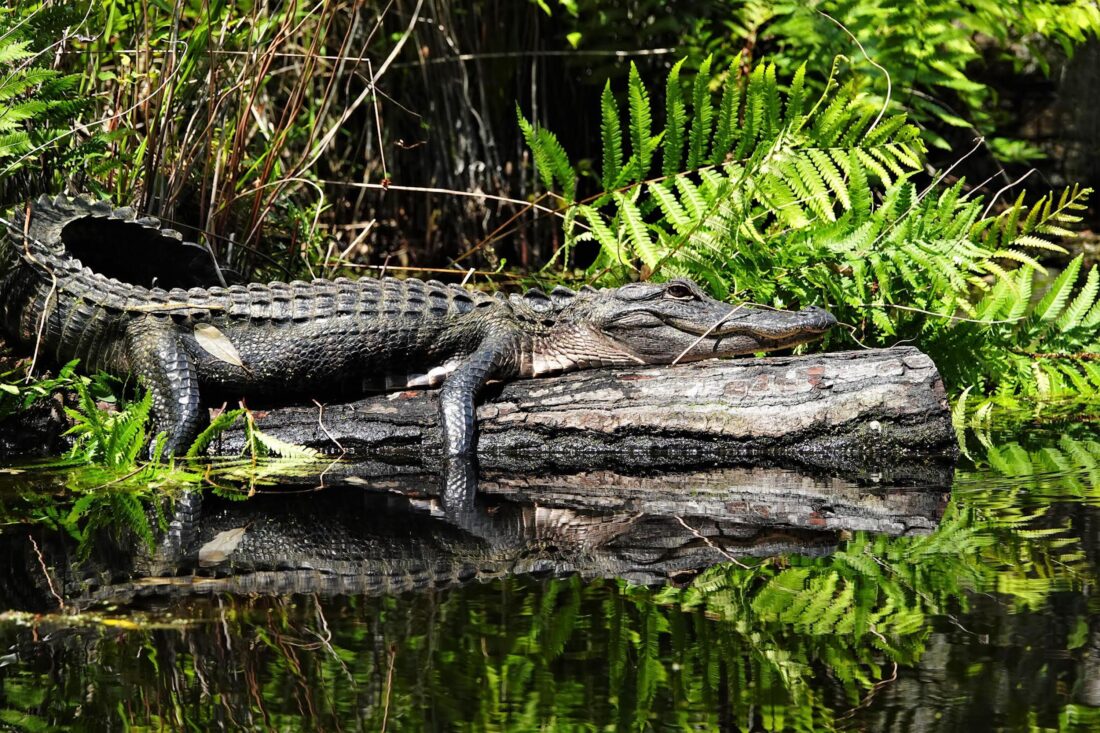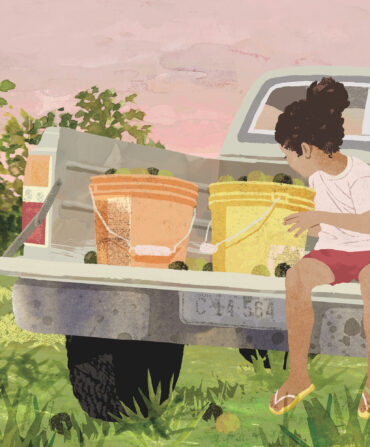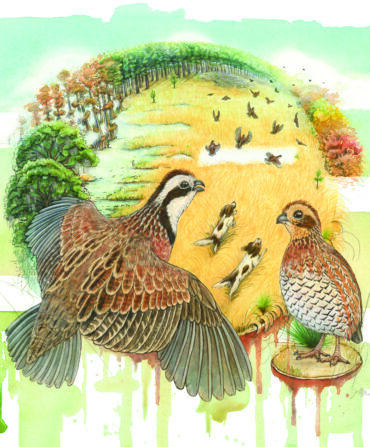Last weekend, Marty Welch and his wife packed up for the fishing trip they take nearly every weekend in Stephen C. Foster State Park, tucked within the Okefenokee Wildlife Refuge in Fargo, Georgia. On a waterway leading to the fishing site, they stumbled upon a rare phenomenon: a congregation of around seventy alligators in the space of just one hundred yards. “We came around a curve, and all we could see were heads in the water,” he says. “I’ve never seen anything like it in my life.” He quickly took out his phone to start filming, even as he navigated carefully through the mass of gators.
The Okefenokee, which straddles the Florida-Georgia line, is the largest blackwater swamp in the country. The astounding biodiversity found within its 438,000 acres has made it a candidate to become a World Heritage Site (even as a mining proposal threatens its delicate hydrological balance). The peat-filled, tea-stained waterways and forests are home to 620 plant species, 234 bird species, and a vast web of other fauna, including black bears, indigo snakes, gopher tortoises, and perhaps the swamp’s most famous resident, the American alligator.

Some 15,000 of the prehistoric creatures live there. But even on their home turf, they remain something of an enigma. “As common as alligators are and as much as people think about them, it’s amazing how many of the basic elements of their biology we don’t yet understand,” says Kimberly Andrews, a coastal ecologist and herpetologist at UGA Marine Extension and Georgia Sea Grant who serves as the alligator lead at Okefenokee. One remaining mystery? Why these highly territorial animals sometimes congregate en masse.
Mark Hoog, Andrews’s colleague and Okefenokee’s alligator research technician and field coordinator, catches and tracks the gators to learn more about their movement and reproduction. He headed out to the site where Welch took his video as soon as he heard the news last Monday. “When I got out there, they weren’t congregated as densely as you see in the video, but we still counted 150 alligators over a mile,” he says. The sight, while striking, isn’t unprecedented: The phenomenon occurs about once a year when water levels are low, which is largely dependent on rain. (Some 70 to 80 percent of the swamp is rainwater-fed.)
“While alligators are both terrestrial and aquatic, they do prefer to stay in the water if they can,” Hoog explains. “When the water levels drop, it forces the alligators to sink back into these areas of deeper water, like the canal in the video and the big lake that it leads to.” Less space for the alligators means there is less space for other aquatic life too, resulting in a higher concentration of prey where the gators are congregating.
Though that’s the working theory, the occurrence is so rare and little-studied that biologists are observing and recording all they can to better understand it. “We’re not sure if they’re all cuing in on the same resource or location, or if there’s some kind of communication we don’t know about between them,” Hoog says. He and Andrews hope to witness more congregations as they study alligator behavior—and to disseminate what they learn to the public so people know how to safely interact with the reptiles.
Welch, who didn’t have another channel to take and found himself in the thick of the alligator action, acted appropriately: He simply drove slowly and carefully through the slew of reptiles. “I’ve lived down here, been out in the swamp, and seen alligators all my life,” he says. “I wasn’t really scared but I did ask my wife to sit down because I thought that if she fell in, there might not be much I could do about it with so many of them.”
As evidenced in the video, the gators moved out of the way of the boat—a reminder that as long as people don’t feed them, hit them with paddles (“if you don’t want a fight, don’t throw the first punch,” Hoog says), or otherwise disturb them, they will flee. Veronica Kelly, the refuge’s visitor services manager, points out that the Okefenokee National Wildlife Refuge has never had an alligator attack in its eighty-seven years of operation. Welch did the right thing by idling his boat, keeping calm, and respecting the animals as he navigated through their home. “Really,” he says, “we thought it was just amazing to see that many at one time.”

The Wild South Podcast
Want more stories about the Southern outdoors? Listen to our new podcast, The Wild South, in which cohosts Dave DiBenedetto and Eddie Nickens talk with the likes of Flip Pallot, Hilary Hutcheson, Andrew Zimmern, and others about fishing and hunting and conserving the lands and waterways of the South and beyond. Get all the episodes here.








